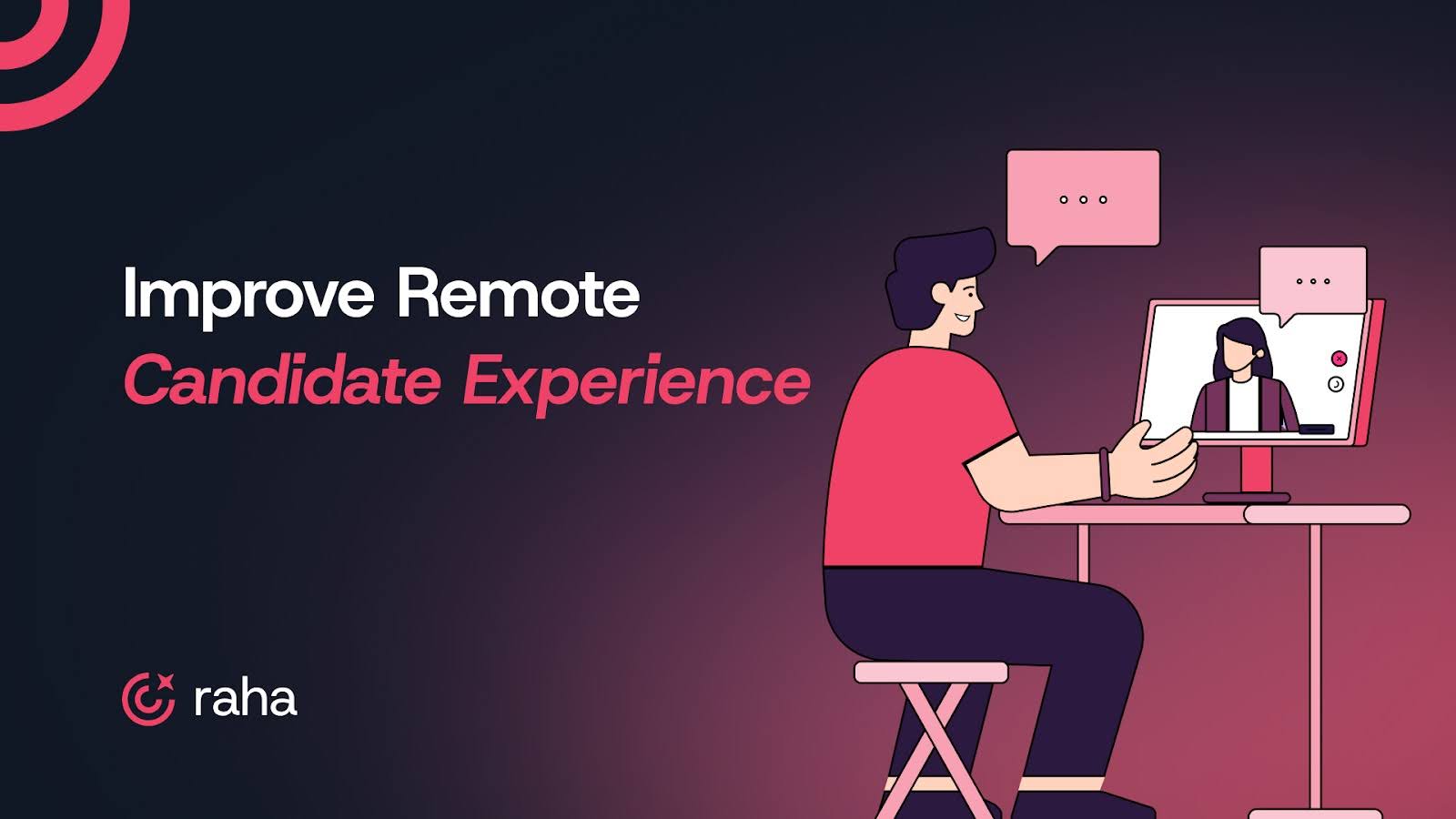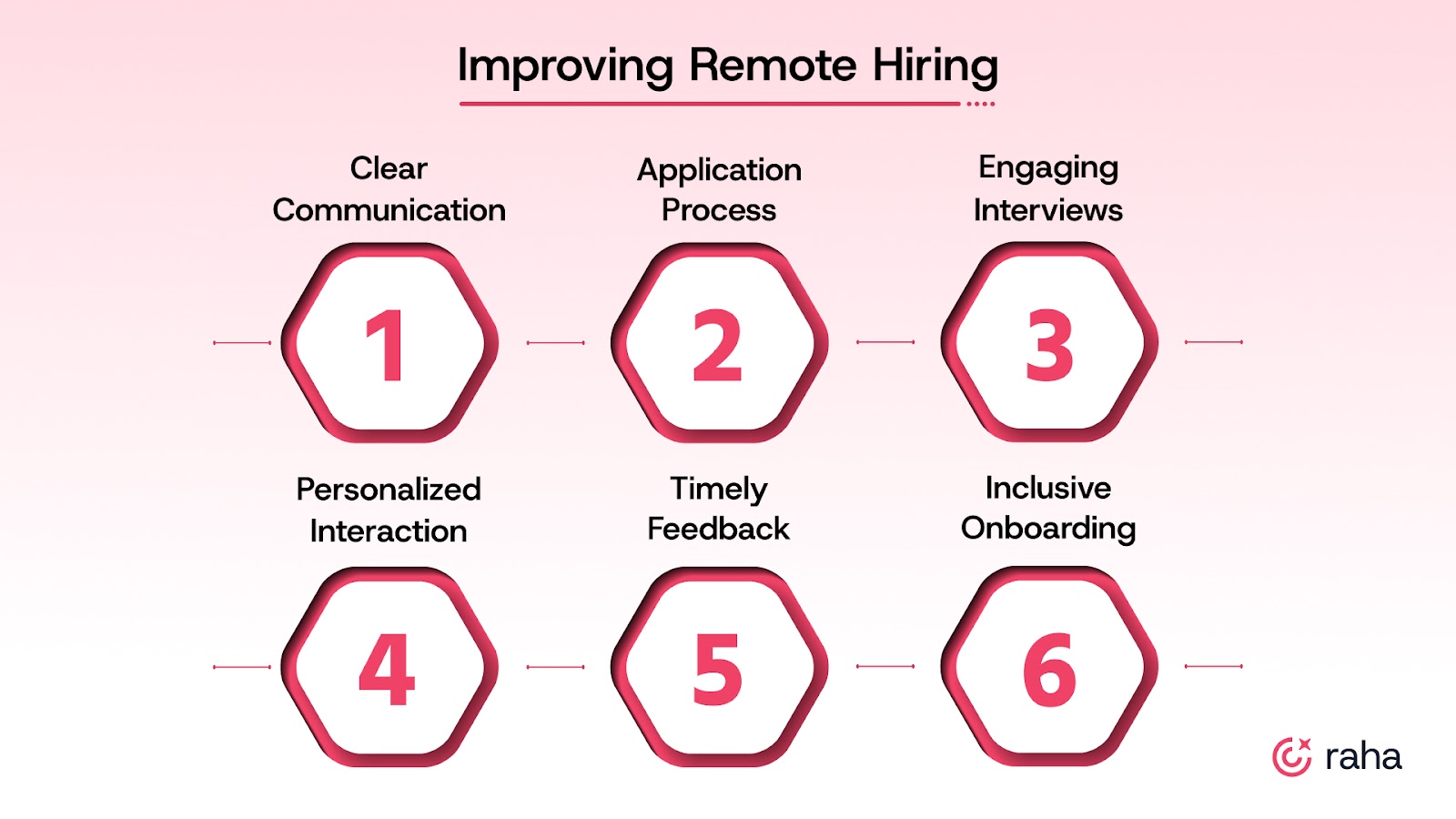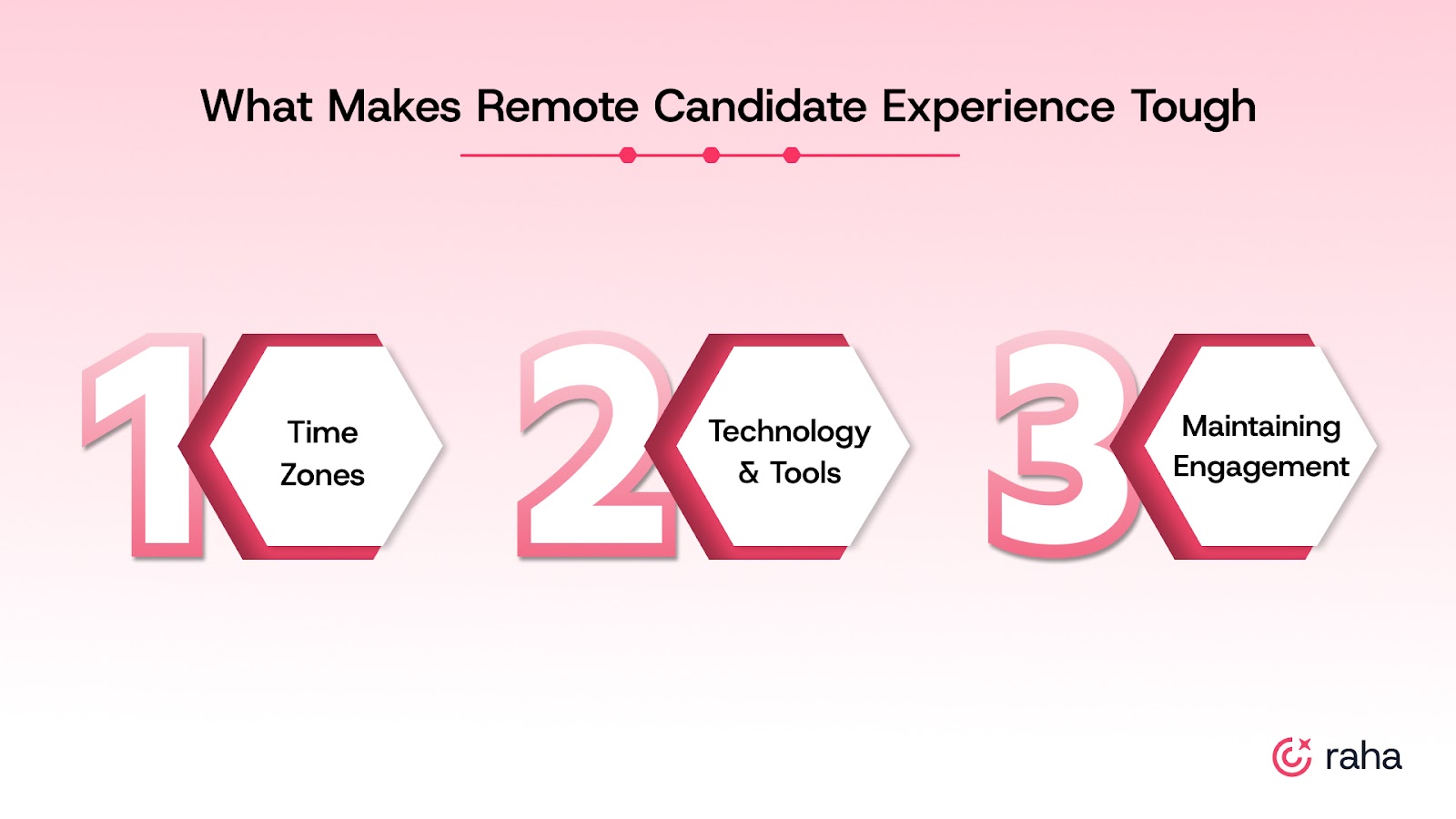
Hiring remotely comes with its own set of challenges.
Scheduling interviews across time zones. Chasing feedback through endless email threads. And watching top candidates drop out before you even get a chance to talk to them. These are some of the issues every hiring team faces.
87% of employers say improving processes would help them hire better. 90% of them even agree that automation speeds things up, cuts costs, and improves the candidate experience.
In such cases, improving your remote candidate experience is all about creating a smoother, faster, more human process. One that keeps top candidates engaged.
Let’s break down some of the most practical ways to improve your remote hiring process. Each one is focused on making your process faster, more transparent, and easier for you and your candidates.
Why Does Remote Candidate Experience Matter?
Remote hiring has become the default for nearly everyone now. At this point, it’s not about whether you do remote hiring, but how well you do it.
In the current trends of remote hiring, where candidates can’t rely on in-person cues, the experience you create is your strongest signal of professionalism.
Here’s how that plays out across the journey:
Here’s where the experience often breaks:
1. First Contact → Application
Your outreach is your brand. If it’s slow or generic, candidates assume the rest will be too.
2. Application → Screening
Delays, unclear scheduling, or asking for the same info twice? That’s friction—and they’ll bail.
3. Screening → Interviews
Unprepped interviewers, reschedules, or awkward Zoom calls signal disorganization. Trust drops.
4. Interviews → Feedback
No updates = assumed rejection. Remote candidates don’t often chase; they move on.
5. Offer → Acceptance
If anything feels misaligned (comp, role, tone), they’ll pass, even at the final stage.
A solid remote candidate experience comes from consistent execution. Every stage needs to operate smoothly, without delays, confusion, or handholding. Once that foundation is in place, your next step is spotting what’s slowing you down.
Let’s explore how to identify breakpoints in your process before they lead to lost hires.
Improving Remote Hiring, End to End
Remote hiring exposes inefficiencies faster. Every delay, every unclear handoff, every missed follow-up can be felt in candidate drop-offs, reschedule loops, and feedback bottlenecks.
The teams that do this well have a few things locked:
- Their scheduling isn’t managed in inboxes.
- Interviewers are prepped, not winging it.
- Candidates know what’s next without asking.
- Feedback comes back same-day, not three rounds later.
Remote doesn’t give you wiggle room. The experience is the process.
This section breaks down how top teams build remote workflows that scale, without losing speed, signal, or candidate trust.

1. Clear and Transparent Communication
If candidates feel in the dark, they bounce. It’s that simple.
So, your job is to be clear, upfront, and consistent about timelines and next steps. No vague “we’ll get back to you soon.” Tell them exactly when they’ll hear from you, and then actually make it happen.
If there’s a delay? Don’t ghost them. Let them know what’s up.
Use tools that can automate emails, chatbots, and reminders to keep the flow going without you having to check every message.
Trust me, candidates don’t want to be the ones chasing you for updates. Make it easy for them to stay in the loop, and you’ll keep them engaged.
2. User-Friendly Application Process
A smooth, straightforward application says one thing loud and clear: you respect candidates’ time. It sets the tone for the entire process. If you’re making them jump through hoops or asking for too much info upfront, you’re just pushing great talent away.
Keep your forms mobile-friendly and straightforward. Cut out irrelevant questions and unnecessary steps. Use tools like Raha AI to automate scheduling and ensure the candidates can easily track their application progress. Get this right, and you’re already ahead.

3. Engaging Virtual Interviews
You’ve probably been there, losing a top candidate halfway through the virtual interview process because the call dragged on with tech issues, no real connection, and no chance for them to get a feel for your team or culture. Next thing you know, they ghost you, and that role stays open way longer than it should. Here’s how to make your remote interviews stand out:
- Don’t let tech trip you up: Use reliable platforms like Zoom or Microsoft Teams, and test everything before the call. No one wants a frozen video or poor audio quality.
- Start with small talk: Kick off with casual icebreakers. “How’s the weather where you are?” to ease nerves and build rapport.
- Bring the culture to them: Host virtual culture updates or team introductions. Let candidates meet the team and get a sense of the company's vibe.
- Use humor to humanize: Lighten the mood with questions like, “If you were a superhero, what power would you have?” It makes the conversation more memorable and less robotic
4. Personalized Candidate Interaction
Top candidates have options, and they want to feel like more than just a resume in your stack. Here’s how you show them they truly matter:
- Use Their Name: It’s a simple yet effective approach. Address candidates by name in emails and during interviews to humanize the process.
- Reference Their Experience: Discuss specific experiences or achievements mentioned in their resume. This shows you’re paying attention to them.
- Customized Feedback: Let them know what specifically stood out about their application or interview. Point out their strengths and what could’ve been improved.
Tender tip: Treat candidates like people, not commodities. If you don’t, they’ll notice and eventually walk.

5. Timely Feedback and Follow-ups
You know how frustrating it is to wait days, or even weeks, after an interview with no word. In recruiting, every day counts. The average response time is shockingly long—24 business days. However, the faster you respond to candidates, the better your chances of securing top talent. Here's how to nail it in three simple steps:
- Set expectations early: Be upfront. Say something like, “We’ll get back to you by [mention the date/day] with next steps.”
- Give clear, actionable feedback: Don’t just say “no.” Explain what stood out and why it’s not the right fit. For example, “Your skills are solid, but the team dynamics weren’t quite aligned.”
- Follow up in real-time: If you’re still undecided, keep them informed: “We’re still deliberating, but you’ll hear from us by [date].”
6. Inclusive and Welcoming Virtual Onboarding
Before day one, make sure new hires have everything ready—logins, tools, clear instructions, so they’re not scrambling out of the gate. Set up a virtual meet-and-greet to introduce them to the team and make them feel part of the crew from day one.
Here’s a pre-onboarding checklist to keep you on track:

When you map out every step of the candidate experience, you are one step closer to filling seats and building a lasting positive reputation.
While enhancing the remote candidate experience remains a priority, it is equally important to recognize the challenges inherent in managing remote recruitment.
What Makes Remote Candidate Experience Tough
Remote hiring is convenient and provides access to a global talent pool. Still, if you’re not prepared to tackle the hurdles head-on, it can lead to candidate frustration and a missed opportunity for your company.
Here’s the inside scoop on what you’re up against and how to fix it.
(Insider: Do not miss the third one)

1. Time Zones and Global Access
Time zones are one of the biggest challenges in remote hiring. You’re trying to coordinate with a candidate in New York, another in Tokyo, and one more in Berlin.
You can’t schedule an interview with one candidate and expect it to work for another 12 hours ahead or behind. Eventually leading to multiple delays, confusion, and the ultimate frustration of trying to line up a time that works for everyone.
The Fix: Use smart scheduling tools. Raha’s AI-powered scheduler takes the guesswork out, letting candidates pick times that work for them. No more endless email back-and-forth. It speeds up your process and keeps everyone on the same page.

2. Technology and Tools
We’ve all experienced technical issues. Video freezing, audio dropouts, or worse: candidates unable to access your application platform! When your technology falls short, you risk losing top talent before the process even begins. These glitches undermine your company’s credibility.
The Hack: Invest in reliable, tested, and user-friendly video platforms and AI tools, and ensure that your application tools are easy to use across devices. Tech support should be immediate, and it’s important to have a backup plan, like a phone call, just in case things go wrong.
3. Maintaining Engagement
Remote candidates can easily disengage without that face-to-face connection. They’re juggling multiple applications, distractions, and limited attention. You should simply capture their attention and make them feel genuinely connected to your company.
Quick Win: Let candidates interact with the people they’ll be working alongside. Send them a virtual office tour to give them a sense of your company culture. The key is to humanize the experience.
Make Remote Hiring Less Manual. More Predictable.
You don’t need a “better hiring philosophy”; you need tools that make your life easier. That’s what improving remote candidate experience is really about: making your process more efficient and your results better.
With Raha AI, you remove all the bottlenecks, so no more chasing candidates or waiting on hiring managers. You get tighter loops, fewer drop-offs, and more time to focus on what actually moves hiring forward.
Want in? Get early access and see what clean execution looks like at scale.
FAQs
1. What are the stages of the remote candidate journey?
The candidate journey includes awareness, consideration, application, interview, offer, and onboarding. Each stage requires clear communication and a smooth experience to keep candidates engaged and moving forward.
2. Why is remote candidate experience important?
A strong remote candidate experience builds trust, keeps candidates engaged, and reflects well on your employer brand. It reduces drop-offs and helps secure top talent in a competitive market.
3. How can I improve the remote candidate experience?
Be clear on timelines, communicate transparently, use reliable tech, personalize interactions, and streamline your application process. Consistent engagement throughout makes a big difference.
4. What tools help enhance the remote hiring experience?
Scheduling tools like Raha AI, video platforms like Zoom and Microsoft Teams, and automated email updates and candidate tracking systems improve efficiency and keep candidates informed.

